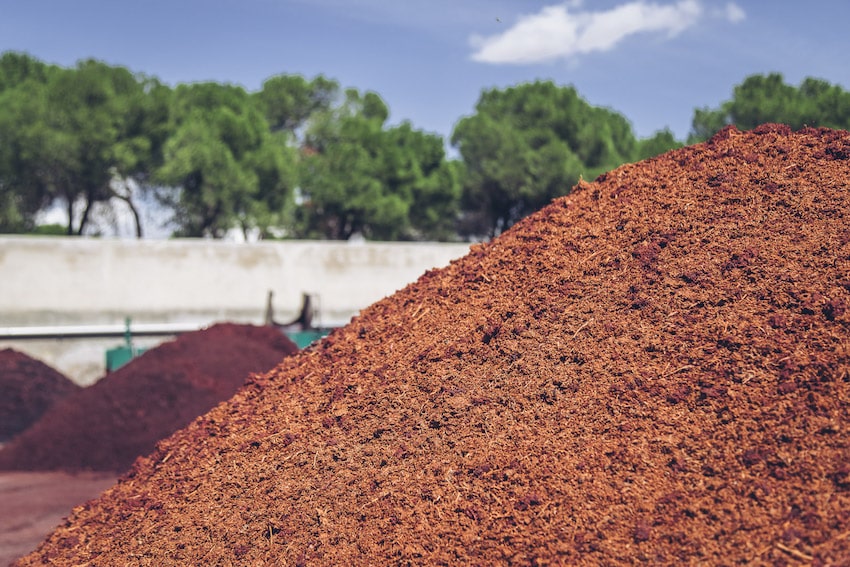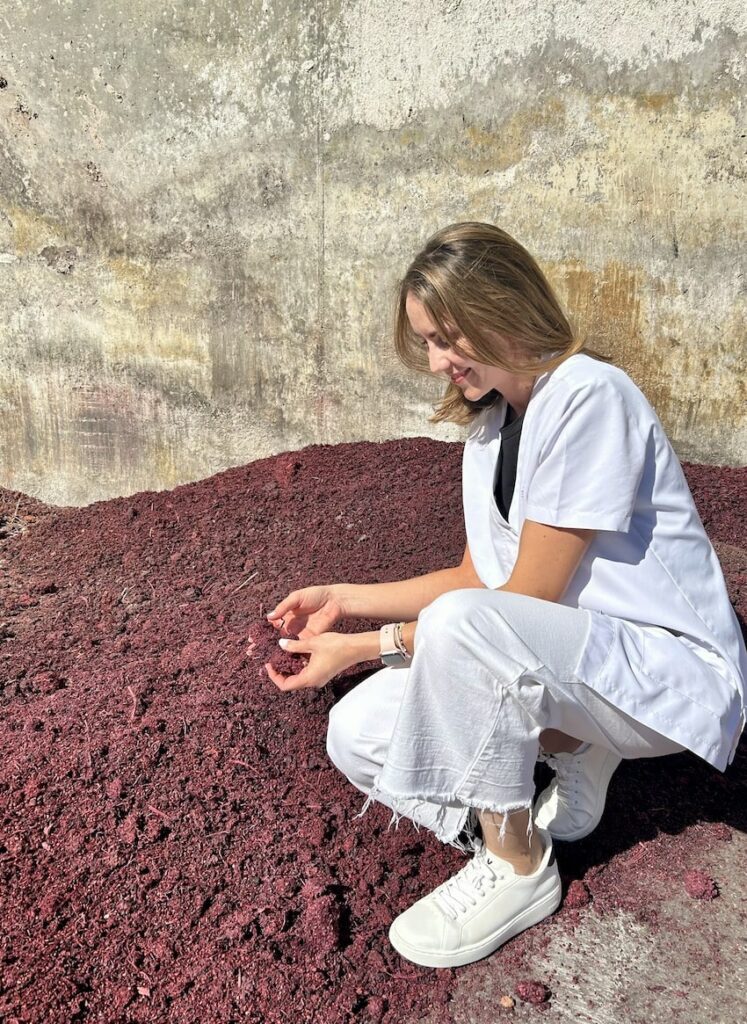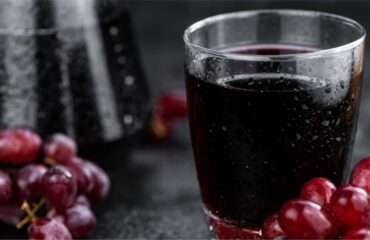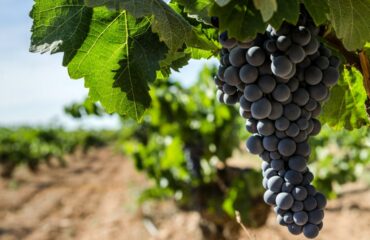The ability to deliver comforting consumer delights, with increasingly healthier and more nutritious ingredients, is gaining ground in the food sector, more so in the chocolate industry. Consumers want sweets that are more natural, more nutrient-dense, lower in sugar and aligned with environmental protection. Chocolate is the perfect candidate to meet these demands. Firstly because cocoa has antioxidants associated with heart health; secondly because it is one of the edible treats that can easily be enriched and have any negative attributes removed. And this is what we will see in this post.
Today we will see that it is possible to enrich chocolate and turn it into a healthy indulgence by adding by-products of grape juice, especially pomace.
- What is grape pomace? Main grape juice concentrate by-product
- Use of grape pomace in gourmet chocolate production
- Examples of chocolate products made from grape pomace
- At Julián Soler we are committed to the circular economy.
What is grape pomace? Main grape juice concentrate by-product

Grape pomace is a mixture of residues generated during the processing of grapes. It is composed of the remains of seeds, skins (skin) and stems (small stalks from which the fruit is held) that are obtained during the production of grape juice concentrate, specifically in the pressing of grape bunches. The percentage of pomace generated depends on the grape variety and the type of press used, but can normally reach 20% of the total mass of grapes processed.
In order to use grape pomace as a natural food additive, it must undergo a drying and milling process. Nowadays, grape pomace flour or powder is available on the market, which can be incorporated into foods and beverages both to enrich them, due to its high nutritional content, and to ennoble them, thanks to its typical grape flavour and aroma. But pomace is very versatile. Pigments and oils can also be extracted from this grape by-product. It can even be used to obtain tartaric acid.
The use of pomace in the chocolate industry and in the food sector in general is of twofold importance:
- It is a by-product with a high content of protein, fibre and phenolic compounds, which is why it is being used to enrich foodstuffs. It is also used as a flavouring, colouring or natural sweetener.
- By exploiting pomace, the total waste generated in the grape juice and wine industry is also being minimised.
What does grape pomace contain?
Grape pomace, obtained from white or red grapes, is a rich source of dietary fibre (50-75%) and phenolic compounds (anthocyanins, resveratrol, catechin, etc.) with bioactive properties that function as antioxidants and antimicrobials. It also contains proteins (12%), oils (between 7 and 12%), soluble sugars (3.7%), vitamins B1, B2, B3, B5 and B7 and minerals such as potassium, magnesium, sodium and calcium.
Grape pomace has enormous health benefits for the body. Its addition to consumers’ diets is associated with anti-inflammatory, anti-ageing and anti-tumour effects. This is why this by-product is so attractive for enriching the formulations of various chocolate presentations and helping to reduce sugars. In addition, it represents a low-cost raw material.
Use of grape pomace in gourmet chocolate production

Research published by the US National Center for Biotechnology Information and the journal European Food Research and Technology evaluated different formulations of milk chocolate with grape pomace flour, yielding important results on the use of this by-product of grape juice to improve the quality of industrial chocolate and to obtain indulgent and healthy gourmet options.
Enriching chocolate
Among the main results, it was observed that the addition of grape pomace as an additive in the production of milk chocolate helped to obtain a functional end product with a significant reduction in costs.
- Primarily, grape pomace helped to significantly increase the level of total polyphenols in chocolate, especially resveratrol. What is the benefit of this? Polyphenols are powerful antioxidants that act in the body to prevent cardiovascular disease, protect the skin, prevent cellular ageing, alleviate eye disease and prevent cancer.
It is true that cocoa, and consequently dark chocolate, are natural sources of polyphenols, with all the health benefits this means. But milk chocolates contain lower percentages of fat-free cocoa in order to achieve the smooth flavours that consumers prefer. So they practically become just another confectionery product, with a high calorie content.
- Consequently, milk chocolates benefit from the addition of grape pomace, both to increase phenolic compounds and to achieve a less intense flavour than dark chocolate.
Providing unique flavours

Chocolate enriched with grape pomace flour has a fruity taste and a darker colour, in proportion to the amount added. In tests published in the journal European Food Research and Technology, these grape pomace chocolates were given a better sensory rating by expert panellists.
In addition, Harold Schmitzm, former chief scientific officer of the Mars company and a university professor dedicated to food innovation, has published the results of his research on the addition of pomace to chocolate.
- He used pomace from grape processing during wine production. He describes the results as a “eureka” moment. The pomace made the chocolate taste even better. He explains that the pomace improves what was thought to be unbeatable: chocolate.
Sugar reduction
In research published in ScienceDirect, it was concluded that grape pomace can be used as a healthy and low-cost additive in chocolate spreads, especially as a partial substitute for sugar and milk powder. This allows the intensity of the bitter chocolate flavour to be attenuated and the sucrose content to be reduced.
Sustainable product innovation
As described above, grape pomace is a valuable and inexpensive source of bioactive compounds, with great physiological benefits for humans. But this by-product of grape juice also represents an ingredient that can bring new flavours and colours to chocolate and chocolate products. It even contains almost as many polyphenols as chocolate liqueur, so it can replace chocolate.
This accumulation of pomace’s benefits makes it a source of inspiration for the innovation of sustainable and healthy products, both in the world of gastronomy and signature cuisine, as well as at an industrial level. For example, from grape pomace it is possible to obtain a natural polyphenolic extract that can be used to thicken creams and add shine to chocolate coatings, while increasing the micronutrient load of the product and offering consumers the possibility of tasting delicious chocolate without guilt.
It should also be remembered that these are sustainable innovations. Because the use of grape pomace is perfectly in line with the reduction of waste in the food industry.
Examples of chocolate products made from grape pomace
Enriched chocolate superfoods include:
- Dark chocolate bars with grape pomace.
- Wholemeal cocoa biscuits, enriched with grape pomace powder.
- Gluten-free chocolate biscuits and brownies, where the wheat flour is replaced with grape pomace flour.
At Julián Soler we are committed to the circular economy.
Everything from the grapes is useful!

At Julián Soler we are producers and exporters of white and red grape juice concentrate. We are committed to eco-friendly growing practices and we carry out our unique Nothing But Grapes process to offer a 100% authentic grape juice concentrate, SO2 free, free of additives, allergens and preservatives.
We make use of grape by-products in various ways. We extract tartaric acid from grape pomace, the main ingredient in the winemaking process, for correcting the acidity of wine, and an essential component in the food industry.
We also promote the Vidartis project, in which our red and white grape juice concentrate is used as a pigment for the creation of pictorial works. In addition, other elements from the vineyard are used, such as crushed leaves and vine shoots, in order to enrich the textures and give free rein to artistic creativity.
Our grape juice concentrate and derived products are the result of combining tradition and cutting-edge technology. We contribute our know-how and capacity for innovation. We have our own laboratory equipped with cutting-edge technology and R&D&I department to develop, together with our customers, new solutions that satisfy the end consumer.
We are your Global Grape Solution Supplier. Contact us and ask for a free quote. At Julián Soler we can export grape juice anywhere in the world, 365 days a year.
Main sources
UCDAVIS (Universidad of California Davis), ScienceDirect , Food Business News, Speciality Food Magazine, SpringerLink.




 by
by